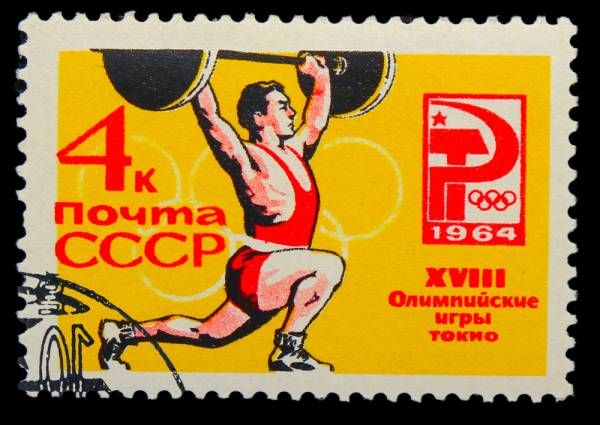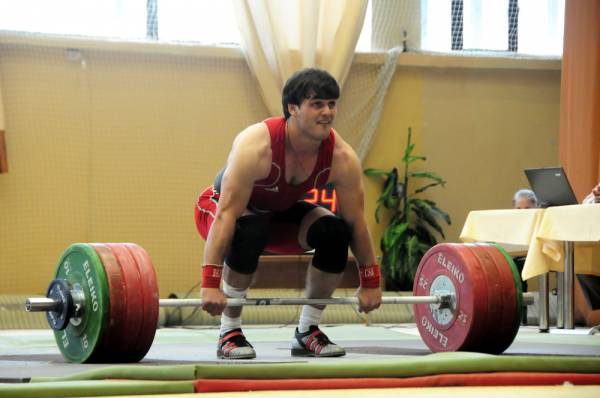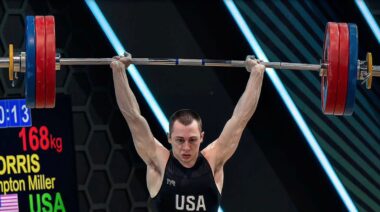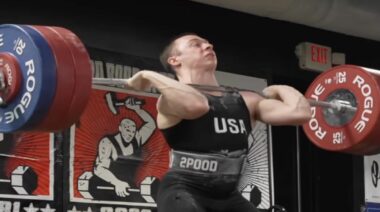Whenever a certain country or those of a certain racial or ethnic heritage dominate a certain sport analysts end up looking for the cause of such dominance. Often the explanation is over-simplified and may just satisfy the good or bad prejudices of the commentators. One group’s characteristics are compared to another’s and conclusions are drawn, especially if there are dramatic differences between them, whether that be racial, cultural, political, or whatever. The difference comes to appear very salient, then becomes a probable reason why one is a winner, the other not. To this end the specter of possible racial or ethnic athletic superiority is inevitably resorted to as an explanation. It is visible and does not require close scrutiny, so the discussion can be settled before the second round of beer is due.
In weightlifting’s early days, the years before World War I, the Germans and Austrians ruled the emerging world of heavy athletics. They were the Bulgarians or Chinese of the day. It seemed impossible to beat them. In the Deutscher Athletic Clubs that existed in some American cities German immigrants practiced the sports of their homeland. They, being of identical stock, were then considered as America’s only possible hope of ever defeating their overseas cousins. It was no accident that York Oil Burner Athletic Club emerged in Pennsylvania Dutch country.
The Egyptians were prominent if not dominant from the 1930s to the early 1950s, breaking the European monopoly in weightlifting. I do not recall any stories about their supposed physical superiority then, but I would not be surprised if someone suggested the genes of the mighty pyramid builders were somehow present in Shams, El Touni, and El Said Nossier. Real reasons were not considered. Little was ever said about King Farouk’s interest in the sport. When he was ousted by Nasser, Egypt almost immediately disappeared as a lifting power.
In the years immediately after World War II, the Americans ruled but only until the Soviet Union started surpassing them in the mid-1950s. This was very shocking to Americans who assumed their post-war prosperity and world political leadership would naturally carry the day in sports. Something had to be at work for the Russians to so quickly displace them. Back then the use or even existence of performance enhancing drugs was unknown to most commentators, so it was not considered. Communist state coercive pressures to win did get some of the blame and rightfully. But it was also speculated that there just might be something special in those Slavic genes that finally allowed them to carry the day over the poly-ethnic Americans. There HAD to be some reason for their monotonous marches to the victory podia.
 As the Communist country victories piled up, the genetic card was becoming all the more credible, and also convenient. How can one be expected to win if your genes keep betraying you? This explanation would regularly be trotted out by some until the last decade or so when the Greeks, Romanians, and Chinese rose while at the same time the supposedly invincible Eastern Bloc teams started to slide. This development forced the “ethnic-causers” to do some re-thinking, since supposedly favorable ethnic membership did not prevent this backslide.
As the Communist country victories piled up, the genetic card was becoming all the more credible, and also convenient. How can one be expected to win if your genes keep betraying you? This explanation would regularly be trotted out by some until the last decade or so when the Greeks, Romanians, and Chinese rose while at the same time the supposedly invincible Eastern Bloc teams started to slide. This development forced the “ethnic-causers” to do some re-thinking, since supposedly favorable ethnic membership did not prevent this backslide.
This ethnic explanation is not always consistent across sports. While dealing with black athletes mostly, author Jon Entine mentioned weightlifting in his book Taboo: Why Black Athletes Dominate Sports and Why We’re Afraid to Talk About It. He attributed Slavic weightlifting victories to the supposedly universally stocky Slavic physique. He was partially right there. Muscular men of limited bodyweight must by definition be stocky and usually short of limb, while the tall and slight will certainly not be successful on the platform.
Where Entine falls down is in claiming that Eastern Europeans have some biological advantage here. They may indeed be short, but their competitors were also of similar height. They had no leverage advantages, category by category. Average heights of Russians versus other Europeans are very similar. I do not know the distribution across the height range but I will bet it is not too different either. Compare this theory to that currently circulating in boxing where Eastern Europeans have displaced many seemingly invincible African Americans as champions in the heaviest categories. Boxing fans attribute this to the advantages possessed by tall, long limbed Russians who can jab from distance, the same people who are supposed to be short enough to be effective lifters.
 Closer to home this thinking has permeated even national level sport results. In recent years the success of Wes Barnett and Oscar Chaplin III in American weightlifting has prompted some to surmise that being of African descent might be the secret. This may or may not be true, but it is disingenuous in its conclusion. In highlighting two recent black stars it also completely ignores decades of European dominance in American and world weightlifting, notwithstanding the presence of a few stars years before (Davis, Bradford, Terry). There simply have been too few black participants in weightlifting to date in order to make any such assertion with certainty. Future research may answer the question but right now we just don’t know.
Closer to home this thinking has permeated even national level sport results. In recent years the success of Wes Barnett and Oscar Chaplin III in American weightlifting has prompted some to surmise that being of African descent might be the secret. This may or may not be true, but it is disingenuous in its conclusion. In highlighting two recent black stars it also completely ignores decades of European dominance in American and world weightlifting, notwithstanding the presence of a few stars years before (Davis, Bradford, Terry). There simply have been too few black participants in weightlifting to date in order to make any such assertion with certainty. Future research may answer the question but right now we just don’t know.
What Entine and others consistently fail to point out in their explanations for sport dominance is the degree of effort a nation puts into attaining sporting excellence. They seem to assume that all races and countries participate in the various sports in proportionate numbers and with equal competitive vigor. But we know that sports participation is not random. It is affected by population, financial considerations, political decisions, cultural emphasis, and many other reasons. As Bulgaria has shown, large numbers are not needed to attain dominance. A concerted effort, especially in a small niche sport like weightlifting can be more effective than saturation participation.
And don’t forget that weightlifting is a niche sport for shorter people. These athletes have far fewer sporting opportunities so they can be targeted more easily by authorities. This results in higher participation rates from what is a small portion of the population. Don’t forget that 56kg and 60kg athletes are over two standard deviations from the norm (5’9” or so in Caucasians). Even 69kg and many 77kg lifters are still one or more standard deviations. And also don’t forget those athletes are not always born muscular, as many believe is responsible for their success. There are enough former 97lb-weakling success stories in our sport to refute that. They may have had natural mesomorphism, but most of their muscularity arrived there via training, not chromosomes. Ultimately it is not the biologically normal specimens of most populations that win weightlifting medals; it is the physical outliers who train very hard in a supportive environment who do.
 What is forgotten is that while success in any sport requires some genetic advantage, those advantages are usually spread sufficiently widely within and across individual ethnic groups that champions could conceivably come from almost anywhere. At elite levels we find that many nations can claim at least one world champion. To win consistently enough to be described as dominant, however, will require something extra. That something is a concerted will and effort to produce – setting up training centers, athlete feeder systems, coaching schemes, research, competition schedules, and above all adequate funding for all of this. If we were to examine each of the nations that have reached elite levels in weightlifting or any other widely practiced sport they have done so via this route, and not by relying on any real or imagined national, racial or ethnic advantage.
What is forgotten is that while success in any sport requires some genetic advantage, those advantages are usually spread sufficiently widely within and across individual ethnic groups that champions could conceivably come from almost anywhere. At elite levels we find that many nations can claim at least one world champion. To win consistently enough to be described as dominant, however, will require something extra. That something is a concerted will and effort to produce – setting up training centers, athlete feeder systems, coaching schemes, research, competition schedules, and above all adequate funding for all of this. If we were to examine each of the nations that have reached elite levels in weightlifting or any other widely practiced sport they have done so via this route, and not by relying on any real or imagined national, racial or ethnic advantage.
All of this brings us to a message ingrained in me by my old debating coach, that being: that which is proximate is not necessarily that which is causative.
Photos courtesy of Shutterstock.






